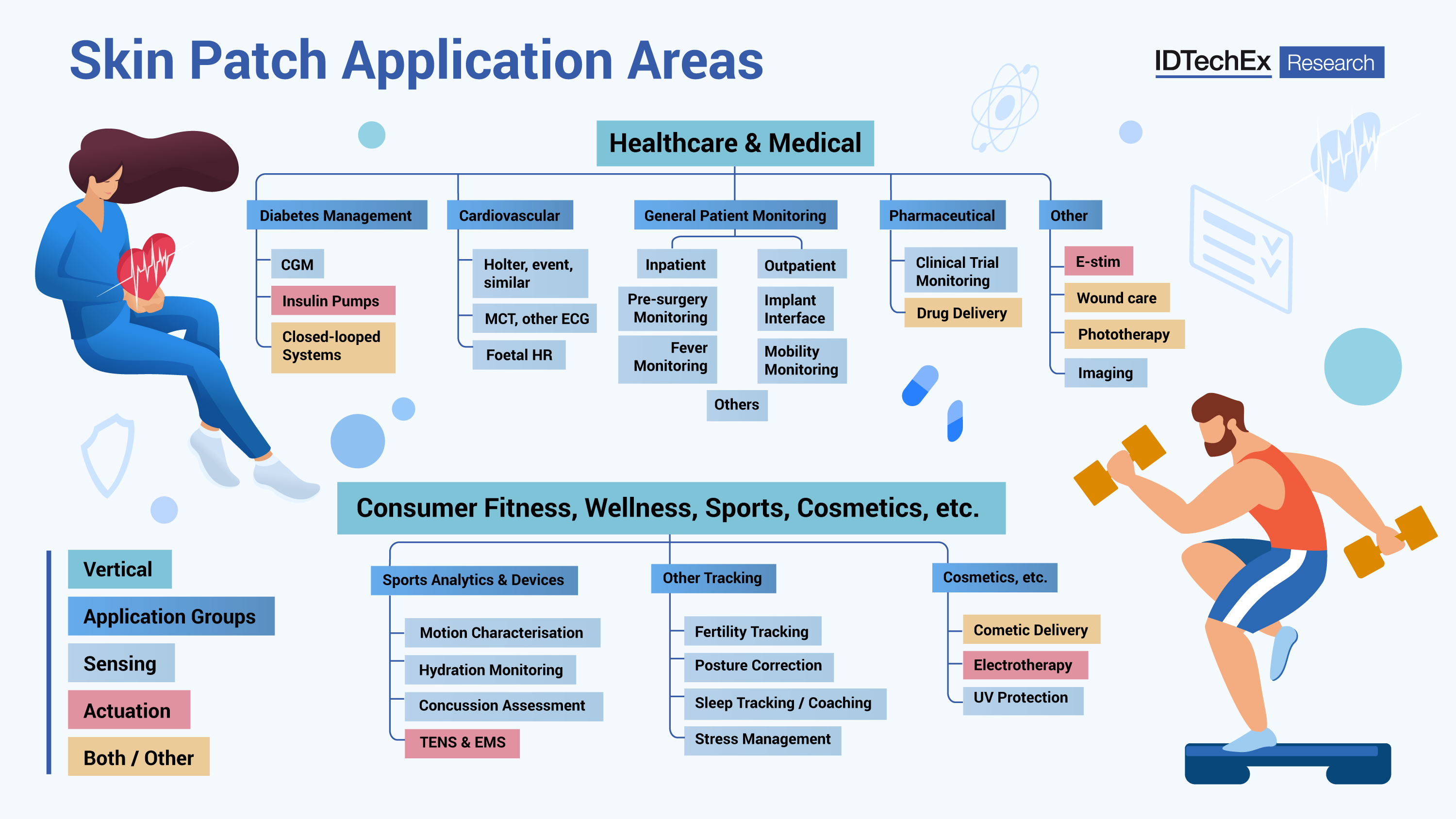COVID-19 helps drive electronic skin patches market
IDTechEx have released their latest report on Electronic Skin Patches. The report, titled ‘Electronic Skin Patches 2021-2031’, covers the market, technology, and players in this unique product sector, and predicts that the sector will be worth $10bn in annual revenue in 2021.
The report captures the impact of the COVID-19 pandemic, covering the impact for each sector throughout 2020 and 2021, and the overall impact relative to the broader emerging trends across the relevant product sectors.
Having covered the subject over the last decade as part of wider research efforts in wearables and medical devices, this report looks chapter by chapter at each of the key market sectors involved. Diabetes management is the largest and most successful sector, predominantly with CGM but also increasing adoption of patch pumps for insulin delivery and moves towards closed-loop systems.
Cardiovascular monitoring is the other sector generating revenue in the billions of dollars each year but is far more fragmented in terms of players, product trends, and geographies. These skin patch cardiovascular monitors are increasingly at the center of an expansion to a more general approach to patient monitoring, both for hospital inpatients and beyond into various outpatient applications.
Other sectors such as temperature-based monitoring (fever monitoring, fertility monitoring), electrical stimulation devices, iontophoresis, and other patient monitoring devices are also characterised, each with unique competitive landscapes and drivers.
On the impact of COVID-19, James Hayward, Principal Analyst at IDTechEx and lead author of the report, said: "Rather than any lasting negative impact as seen elsewhere, the COVID-19 pandemic has led to an acceleration in many of the key trends underpinning the development of this market. Wider adoption of telehealth, additional drivers for remote patient monitoring, and larger-scale adoption of digital patient management solutions were all trends which we covered previously, but the acceleration in each has left us 2 years ahead of our original projections for their widespread adoption."
The report goes into more detail about the drivers behind this change. Initial lockdowns caused a significant negative impact in many sectors due to the postponement of "non-essential" physician visits. However, many companies immediately shifted to more telehealth-based services which helped to meet the demand.
In addition, regulatory barriers were lowered, allowing many products to receive emergency approvals and advance their commercialisation and deployment faster than they would normally have been able to. This then extended to larger companies with more ambitious aims around general remote patient monitoring and management using digital systems, which have been in development for some time but saw more launches and announcements as progress accelerated.
Electronic skin patches as a product category is extremely diverse, meaning different drivers, regulatory situations, and underlying trends in many of the different markets where skin patches are relevant.
For example, as more funding became available around pandemic response options, 2020 and 2021 also saw a significant revision of the reimbursement amounts awarded to mobile cardiac telemetry devices in the US, drastically altering the margins and outlook for certain product types.






